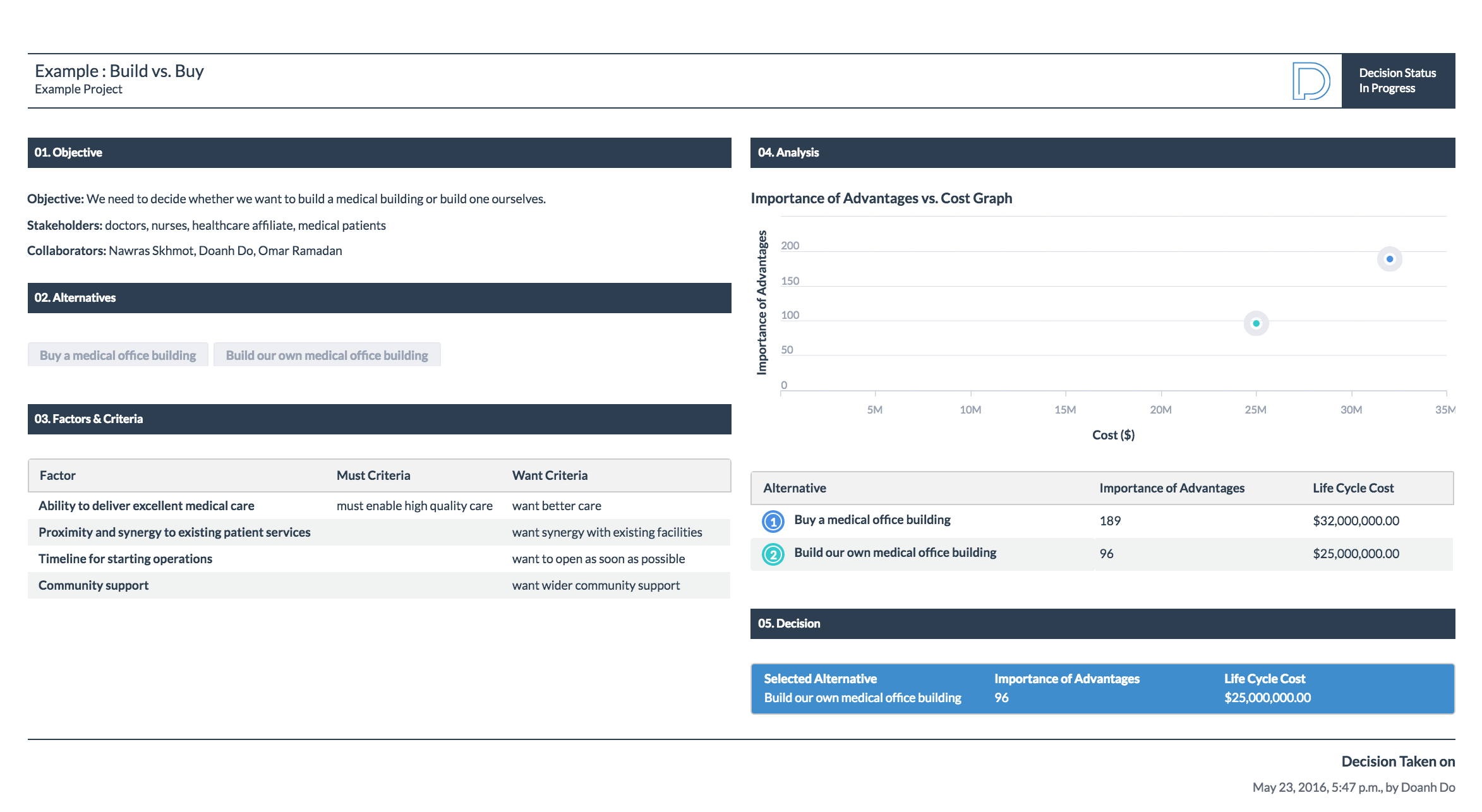All characters, companies, and events in this scenario are entirely fictional. The goal of the scenario is to demonstrate how an organization might use the Paramount Decisions process to develop a transparent and sound decision.
A large healthcare organization needs to expand their medical services in order to capture a new market opportunity. They need to decide whether they should build their own building or buy an existing building from a developer.

The first step is to define the decision's goals and objectives. In this situation the goal is to choose whether to buy or build. The real estate and architectural office of the healthcare organization will ultimately make this decision. The stakeholders of this decision include: doctors, nurses, patients, company board of directors, regulator agencies, and the local community.
There are two alternatives for this decision: 1) buy a medical office building or 2) build their own medical office building. A local developer has approached the organization with a facility that fits their needs and is available for occupancy in 3 months. The facility is located 5 miles from their existing hospital. They can also choose to build a new medical office building next to their existing hospital. The project can be completed and be ready for occupancy in 18 months. By building a new facility, the organization can deliver the highest level of healthcare services. However, any new construction will require community support and lobbying efforts.
For this decision, the organization has decided to consider 4 factors:
1) Ability to deliver excellent medical care
2) Proximity and synergy to existing patient services
3) Timeline for starting operations
4) Community support
The criteria of the factors are shown below.

After the organization has defined the alternatives and the factors for consideration, they can start gathering data on the attributes. An attribute is a characteristic, quality, or consequence of just one alternative. An attribute can either be qualitative or quantitative. If an attribute of an alternative does not satisfy the 'must criterion', it will not be considered in the subsequent steps of the decision-making process.
The attributes of this decision are shown below.
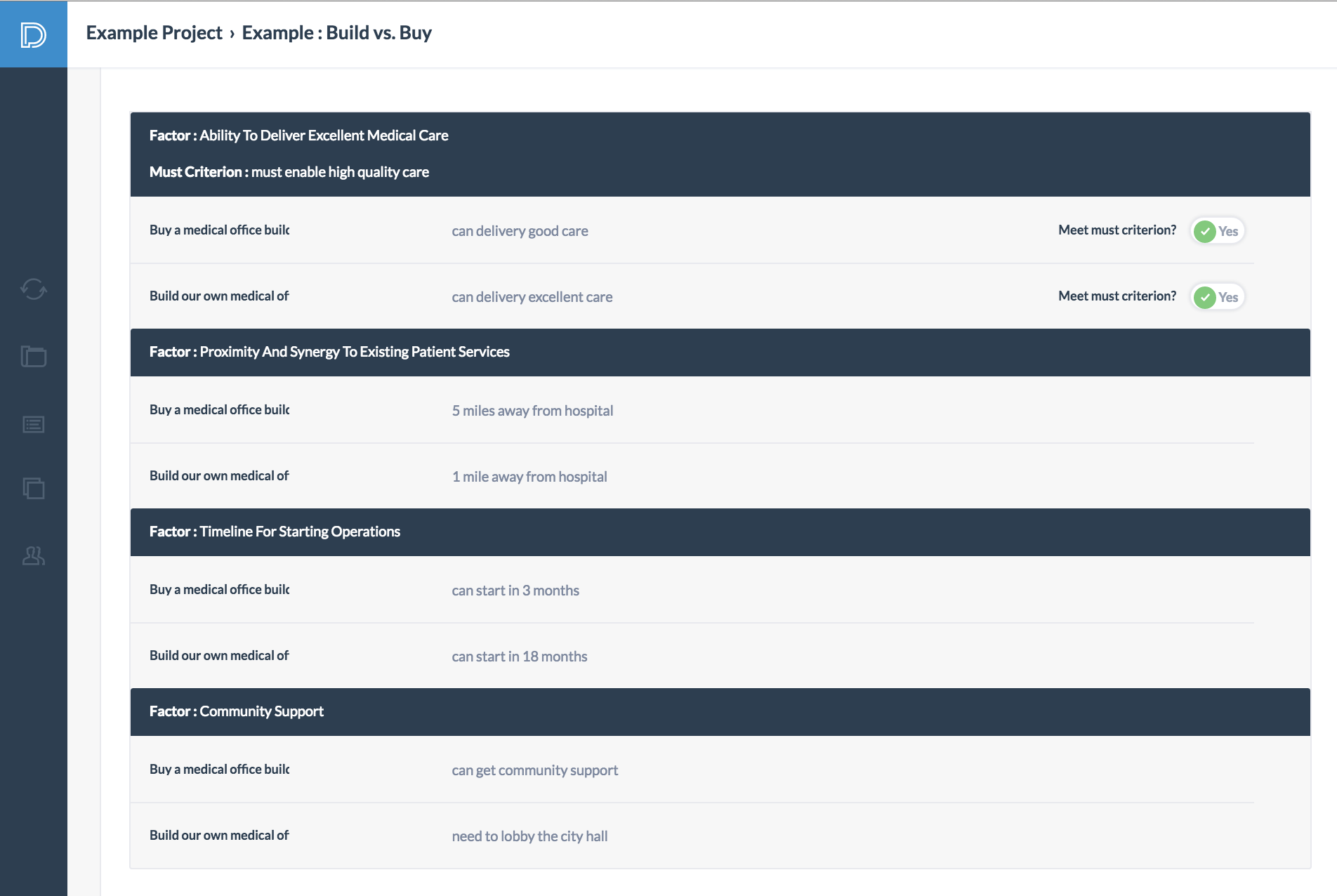
The key insight in making good decisions is to base them on the advantages. To determine the advantages, the organization must first select the least preferred attribute within each factor. This serves as the baseline for stating the advantages of the other attributes relative to it. Finally, they select the most important advantage within each factor. They continue this process for all the remaining factors.
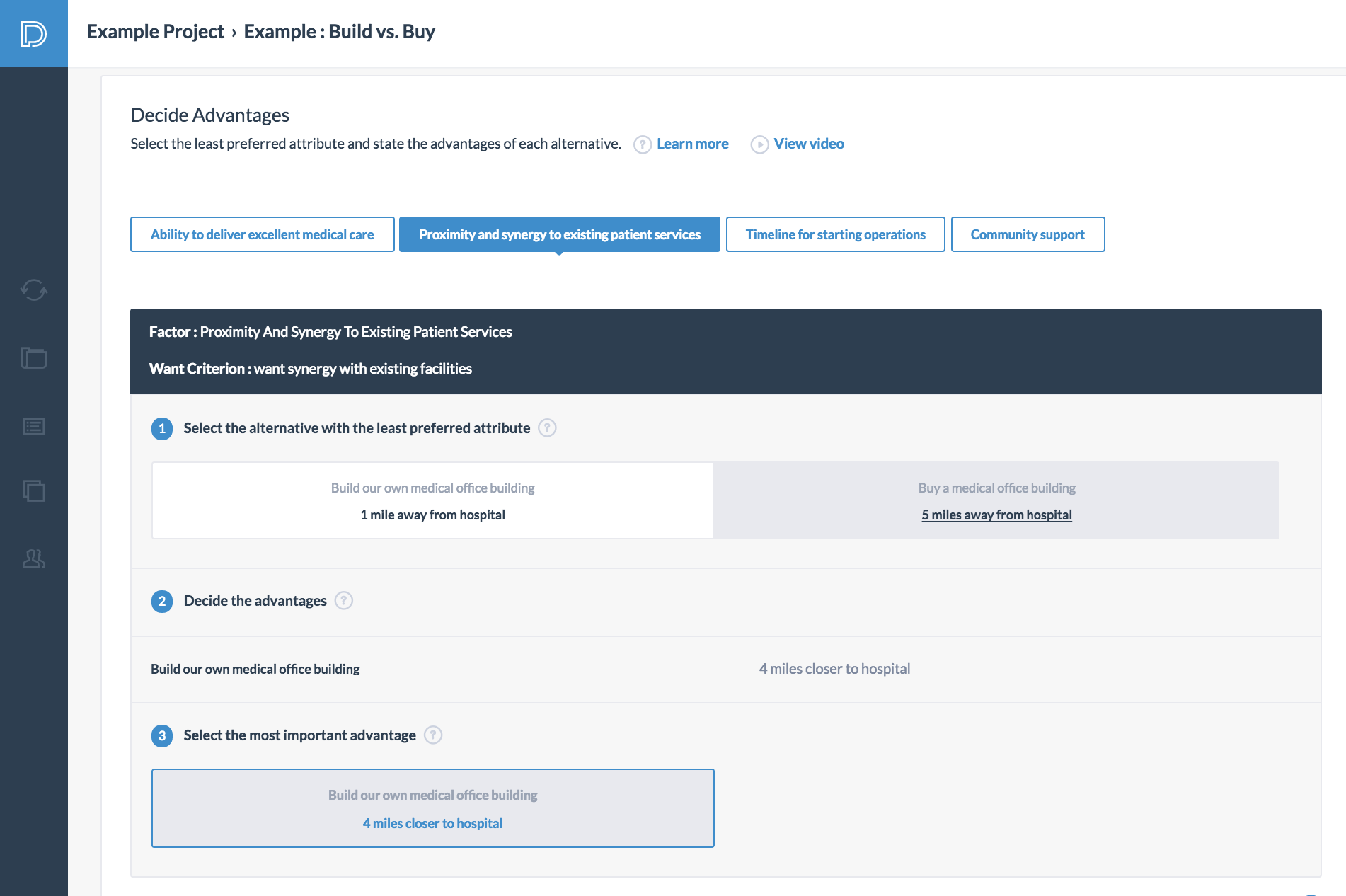
The sixth step in the decision-making process is the most subjective and requires an open dialogue between the stakeholders. After a heated debate, the stakeholders reached an agreement about the weights of the advantages. During the discussion, the real estate and architectural department was able to understand the concerns of the other stakeholders and gained more insights into what they find valuable.
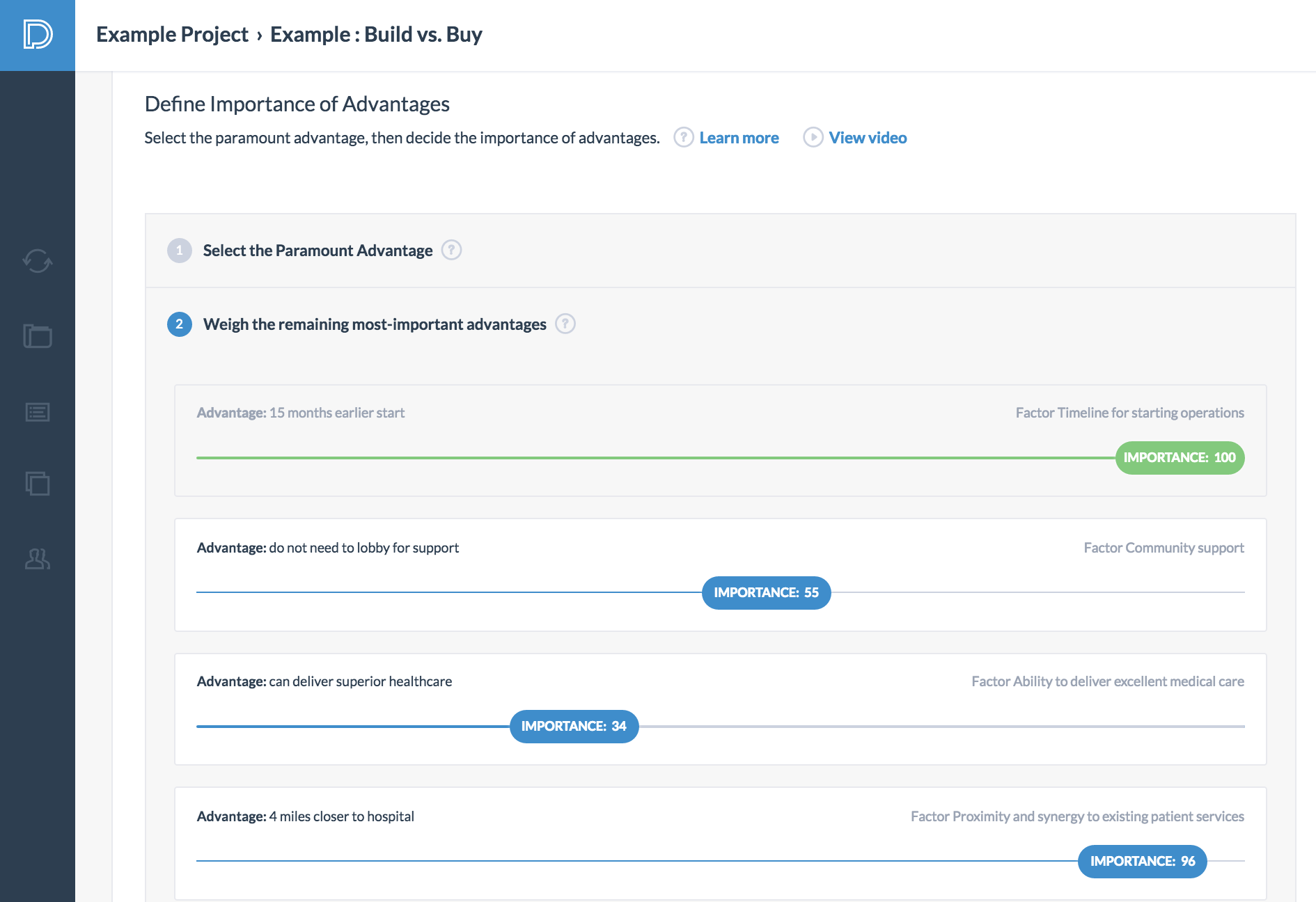
The seventh step in the decision-making process is to define the cost. The cost is the price that must be paid in order to obtain an alternative and can be broken into several categories. Notice that the cost is treated separately with a clear distinction from the previous steps.
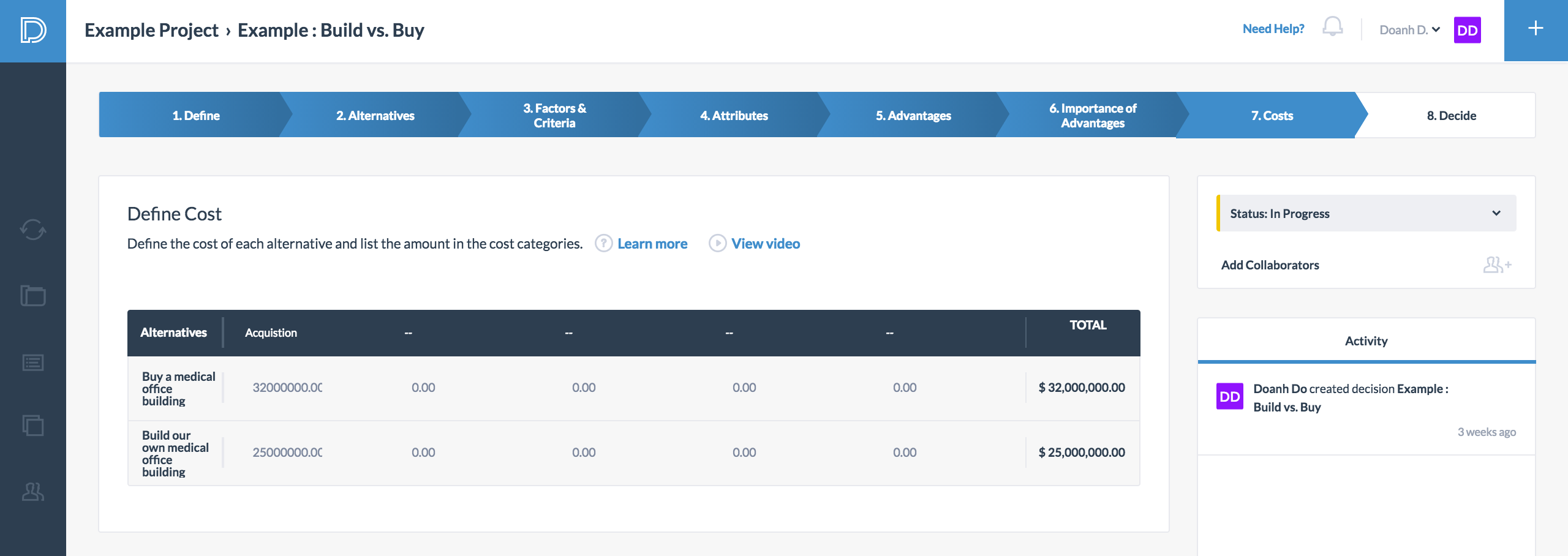
The organization ultimately makes their decision base on the total importance of advantages vs cost. In this situation, alternative 1 (buy a medical office building) has a total importance of advantages of 189 and costs 32 million USD. Alternative 2 (build a medical office building) has a total importance of advantages of 96 and costs 25 million USD.
After some deliberation, the decision-makers came to the following conclusion: "We decided to build our own building. The differences in the advantages between the two options were not that far apart. By building our project, we can save $7 million and have it next to the existing hospital. It will take us 15 months longer for the project to be open to patients."

One of the benefits of using Paramount Decisions is the automatically generated reports. The software can create two types of reports based on the data inputted for the decision: 1) a full report and 2) a single page (A3 report). The decision-makers can easily send out the reports to different stakeholders to communicate the rationale of the decision. The analysis is clearly documented on the reports leading to greater transparency and group consensus. In the future, the organization can review the results of the project and recalibrate their decision-making process based on lessons learned.
